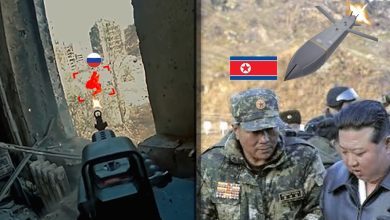Gewehr 43: The Road To Germany’s Garand


Here we take a deep dive into the development, history, function and use of the German Gewehr 43 self-loading rifle.
The Gewehr 43, or G43, was an excellent semi-automatic combat rifle produced late in World War II by Germany. Nobody can say for sure, but if the Germans had G43 rifles at the onset of the war, the outcome may have been different. At the very least, the Allies likely would have lost more men were they forced to contend with this rifle’s impressive firepower.
The increased use of semi-automatic rifles during World War II changed the concept of the combat rifle from manually operated bolt actions to fast-firing semi-autos. This change didn’t happen overnight, but the writing was on the wall that self-loading rifles were the way of the future and virtually every major player of WWII was investigating how to get more of them into the hands of their armed forces.
Gewehr 43 Specs:
Action: Short-stroke gas piston w/ flapper lock
Cartridge: 7.92×57mm Mauser
Capacity: 10 Rounds
Barrel Length: 21.7 Inches
Overall Length: 43.9 Inches
Weight: 9.7 Pounds
Early Self-Loading Rifle Development
Fusil Automatique Modèle 1917
At the turn of the 20th century, armies around the world were experimenting with semi-automatic combat rifles. The French, in an effort to replace their Lebel bolt action rifles, adopted the Fusil Automatique Modèle 1917 and put it into service in the latter part of the First World War. It used a gas-operated system with a long-stroke piston with a rotating bolt and fed off an internal 5-round magazine. Troops found the rifle heavy at over 11 pounds, too long, the magazine was too fragile, and the rifle difficult to maintain in the trenches. Bolt action rifles were still more reliable in the mess of war and cheaper to produce on a mass scale, but that did not deter further development of other semi-automatic rifles.
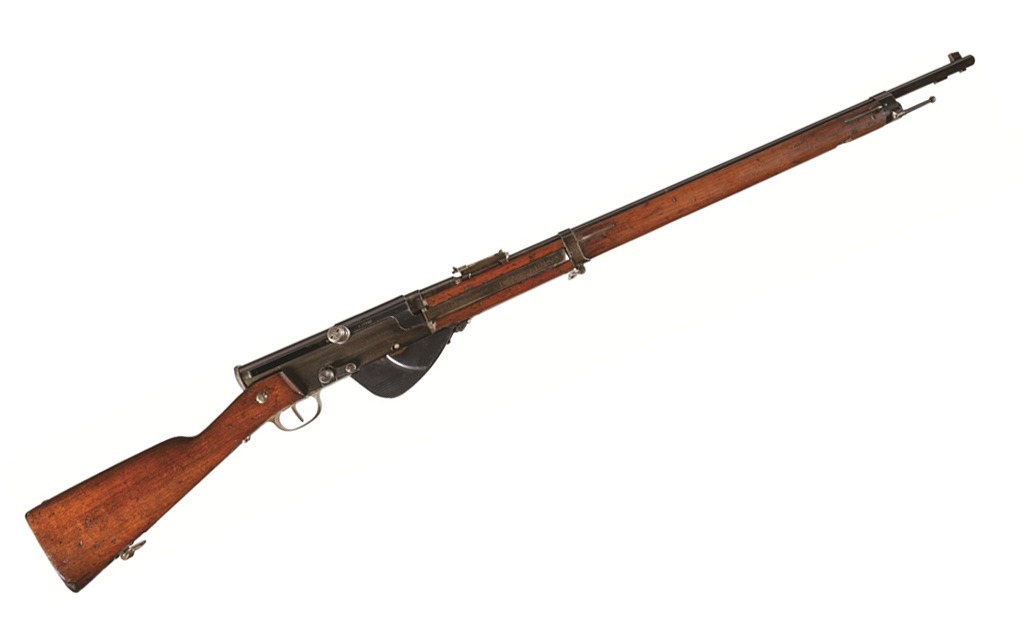
Avtomat Fedorov
The next significant self-loading rifle came out of Russia in 1915 with the Avtomat Fedorov. This also saw limited use in WWI. It was a short-recoil operated, locked-breech rifle that was actually a select fire weapon capable of both full-auto and semi-auto fire. Later models had a 25-round detachable magazine. This rifle had reliability issues, was difficult to maintain and when used in automatic mode it heated up too quickly.
M1 Garand
The first truly successful self-loading military rifle arrived in 1936 with the American M1 Garand. It not only lacked the bugs and reliability issues that plagued previous designs but was also able to be mass-produced and widely issued to American armed forces. While older self-loading rifles had seen action before, their numbers paled in comparison to how widely the Garand would end up being issued.
The Garand was the first standard-issue self-loading rifle adopted by the U.S. military, and it proved to be a great advantage when facing troops mostly armed with bolt-action rifles like the German Karabiner 98k.
AVS & SVT


The Soviets were also determined to replace their bolt-actions, but their efforts weren’t as successful as the American’s given they never managed to produce enough self-loading rifles to make them standard-issue equipment by the war’s end. Soviet efforts to produce one seriously started in the 1930s and resulted in designs like the AVS-36 and the SVT-38, but both designs had many issues and neither was truly combat-ready. That changed with the adoption of the improved SVT-40 rifle in 1940, and while it still saw widespread use during the war, too few were produced to replace the Mosin Nagant.
The Road To The Gewehr 43
Well aware of the existence of the SVT-40 and M1 Garand in the hands of their enemies, Germany realized that a self-loading rifle was sorely missing from its inventory. The response was the development of the Gewehr 41 in 1941. Or, more accurately, the Gewehr 41s considering there were two of them: the G41(W) and the G41(M).
The German Army provided specifications for a semi-automatic rifle to several firearms manufacturers. Two of the design criteria seem odd by today’s standards. One specified that no holes were to be drilled into the barrel to port gas into the operating mechanism, as they believed the gas port could cause premature erosion of the bore and lead to accuracy issues. Another design feature the German Army requested was a manual bolt action backup in case the auto-loading system failed.
Walther and Mauser submitted prototypes, and both designs employed a cone-shaped gas trap at the muzzle that deflected gas into a long-stroke piston that operated the mechanism. The rifles were chambered for the same cartridge as the Karabiner 98k, 7.92x57mm Mauser, and were loaded via the same stripper clips used with the bolt action. The new Walther and Mauser designs, however, used fixed, 10-round box magazines. Both designs were adopted by the German Army as the G41(W) which was the Walther design and the G41(M), the Mauser design.
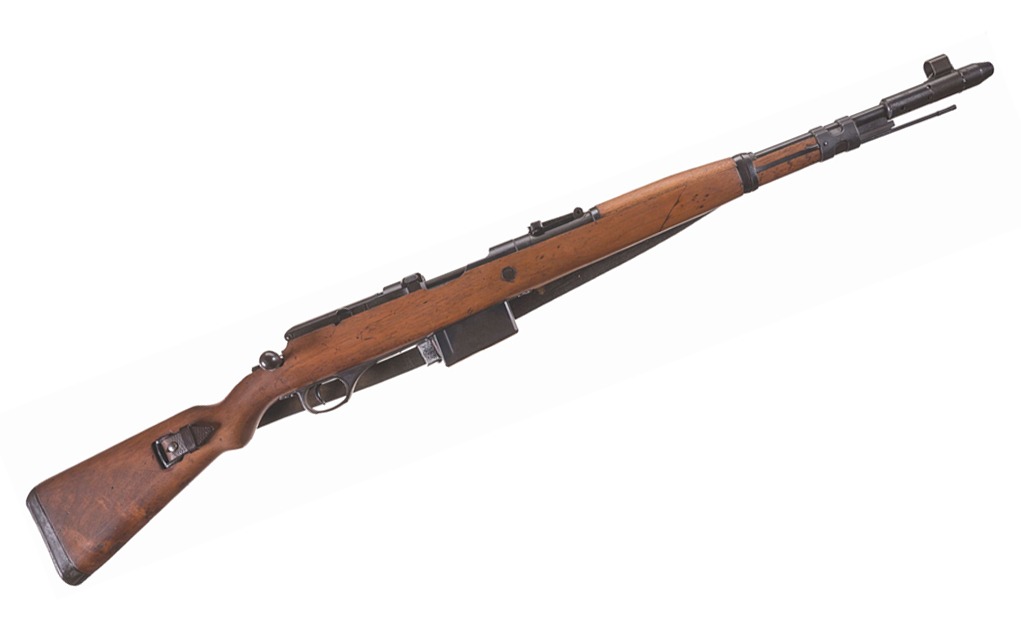

The Mauser G41 followed the German Army’s design specification criteria to the letter and as a result, it looked a lot like a Mauser bolt-action rifle. It even incorporated a traditional bolt handle that automatically disconnected the bolt assembly from the recoil spring if the rifle was used in manual mode. The controls and sights were also similar to the Karabiner 98k bolt action.
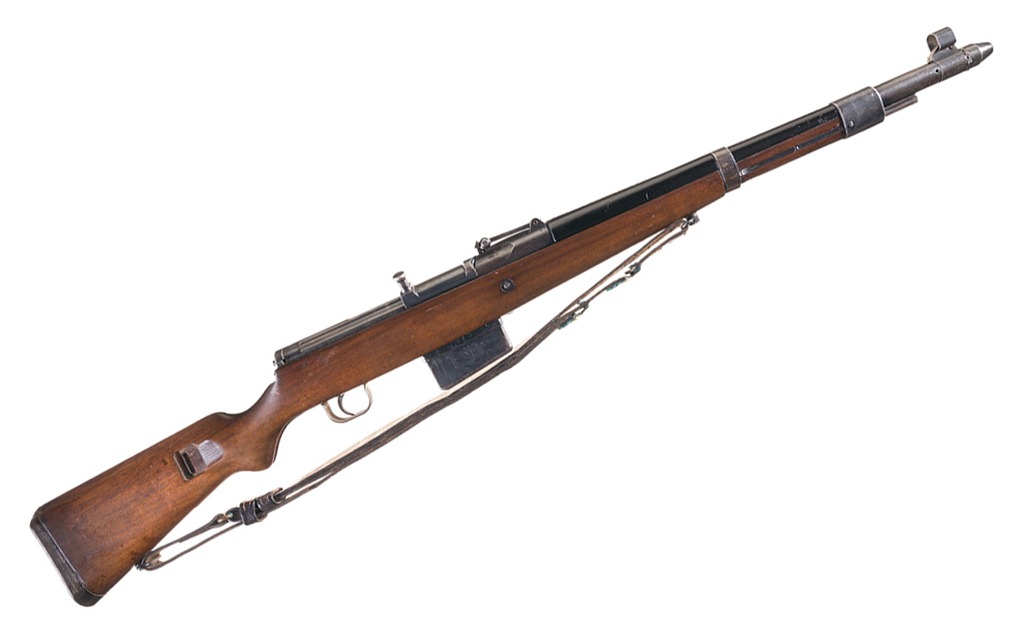

Walther ignored some of the specifications sent to them, and they were better off for it. The Walther G41(W) design did not include the manual bolt-action backup system and was the better of the two G41 designs. But—there’s always a but—neither the Mauser nor the Walther Gewehr 41 were very successful.
Like many semi-automatic combat rifles before them, they were a nightmare to maintain in field conditions, were too heavy, hard to disassemble and frankly didn’t work all that well. Gas fouling issues plagued both designs and both rifles required intricate machining that was time-consuming and expensive to build. The Walther, being the better design of the two G41s, was built in larger numbers but still saw very limited use. Given the many issues with both G41 versions, Germany’s journey to a semi-auto combat rifle was not yet over.
Rise Of The Gewehr 43
In June of 1941, Germany invaded the Soviet Union, and in combat, they encountered small numbers of Soviet troops armed with SVT-38 and SVT-40 rifles. All’s fair in love and war, so some captured examples of these were sent back to Germany for evaluation. After looking under the hood, it was clear that the SVT-40 was a superior design to either G41 variant.
As a result, Walther copied and refined the SVT-40’s short-stroke gas system and combined it with some elements of the G41(W) to produce the Gewehr 43 in 1943. The G43 used a simpler and more reliable ported gas system to operate the bolt. Many of the machined parts were replaced with stamped metal parts which helped cut manufacturing costs and production time.
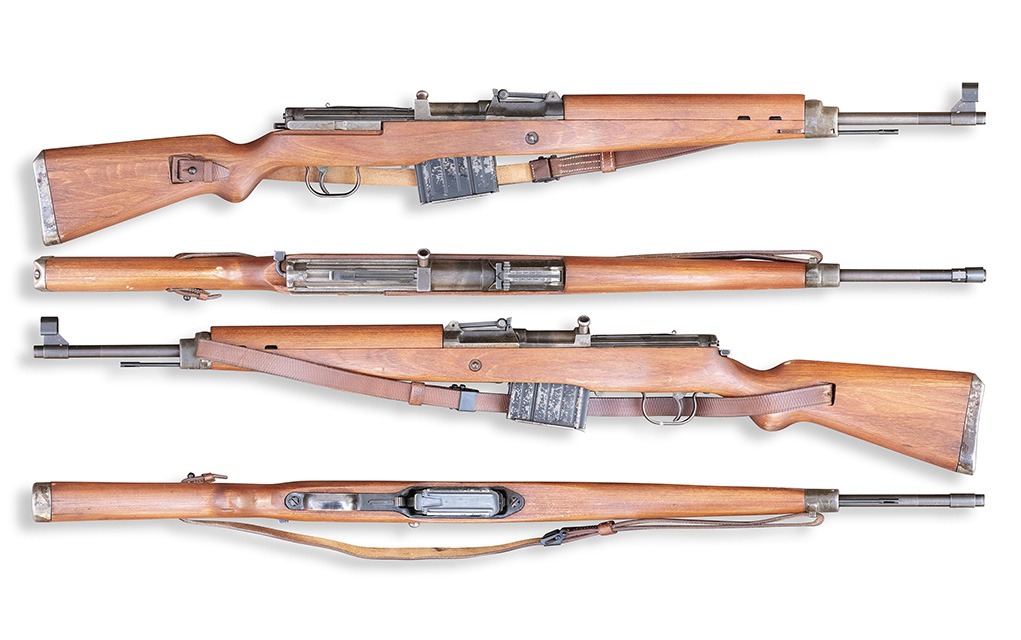

The Gewehr 43 action used an improved gas-operated short-stroke piston taken from the SVT alongside a flapper-style locking bolt borrowed from the G41(W). In a flap-locking system, a pair of flappers on the sides of the bolt lock into the receiver when the bolt is in battery. The flappers unlock and pivot into the bolt when a shot is fired, sending the bolt backward to cycle the rifle.
The G43, like the G41, was chambered for 7.92x57mm Mauser. However, unlike the G41, the feed system on the G43 was again inspired by the SVT as it was given a 10-round detachable box magazine that could be recharged while installed in the rifle via 5-round stripper clips.
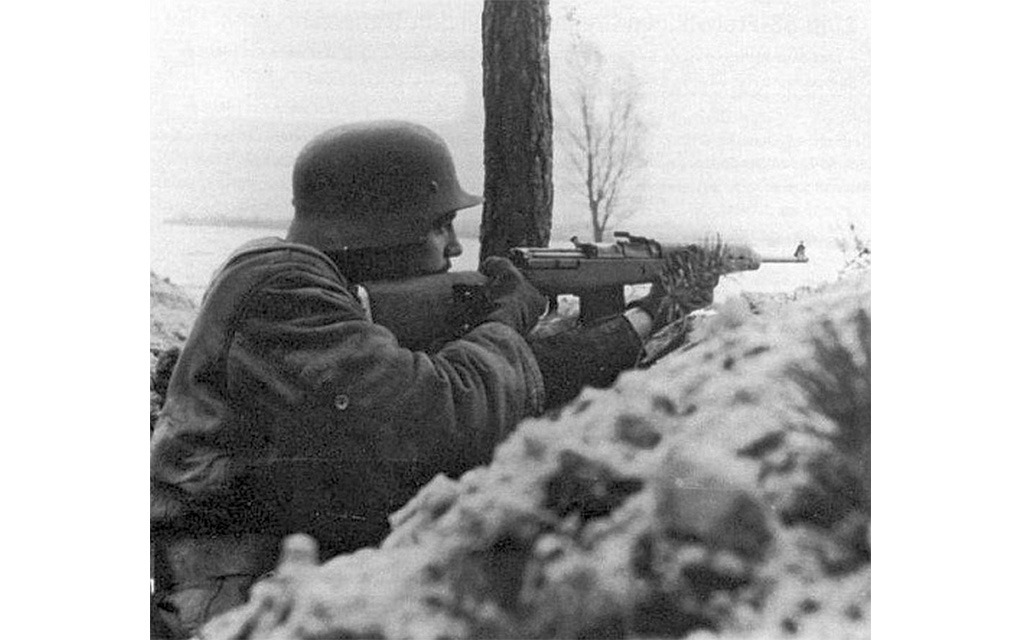

Just over 400,000 Gewehr 43s were produced between 1943 and the end of the war in 1945, a truly impressive amount for such a short time and given the state of the German industry that late in the war. That said, the later-production rifles often look noticeably rougher around the edges than the earlier production models. As Germany became more desperate for arms, the priority shifted from making fine weapons to merely functional ones.
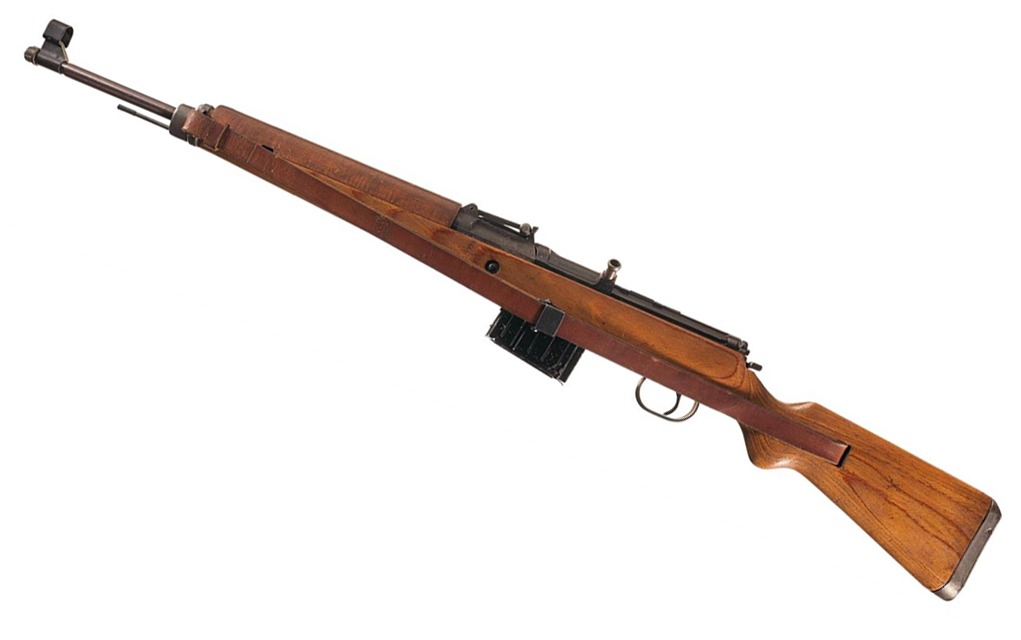

It’s also worth noting that in 1944 the Gewehr 43 was redubbed the Karabiner 43 or K43, however, the guns are identical besides the name they were stamped with.
The general consensus on the G43 is that it was an excellent combat rifle for its day. Its only real issue was that it arrived too late and in too few numbers to become the standard-issue infantry rifle.
Gewehr 43 Sniper Variants
Much like the SVT-40 that helped inspire it, the Germans also attempted to use the G43 as a sniper or designated marksman rifle. Also like the SVT-40, it was found to be more effective as an infantry rifle and was used far less by snipers/designated marksmen than the more accurate optic-equipped bolt actions of each respective nation. That said, about 50,000 Gewehr 43s were equipped with 4-power magnified ZF-4 scopes for sniping roles.
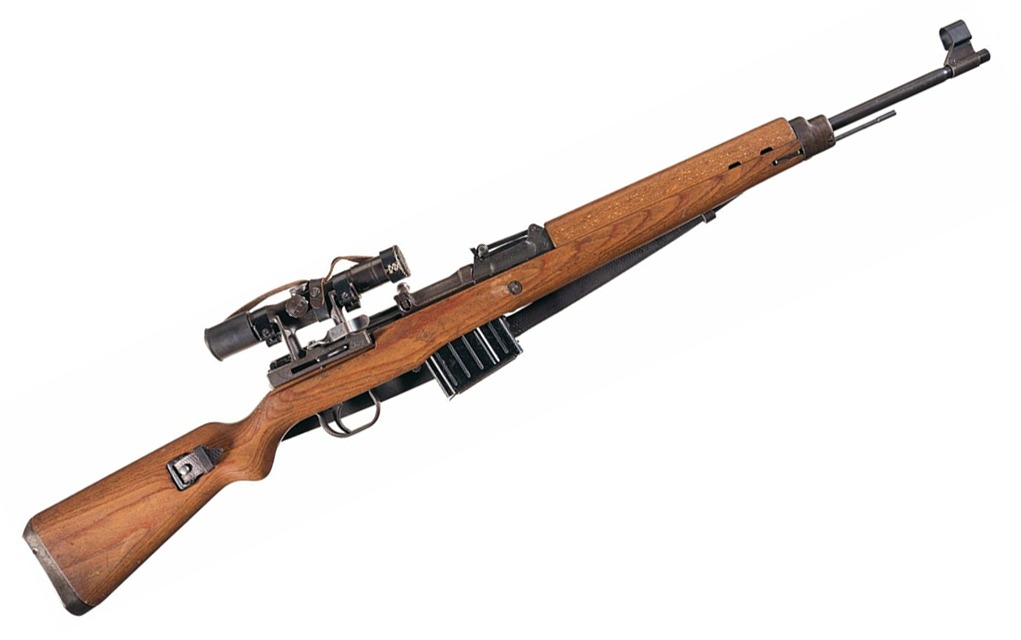

Collecting & Shooting The Gewehr 43
Essentially, the G43/K43 is only for serious collectors, truly dedicated to owning this piece of history. Even with production numbers of over 400,000 rifles, the G43 is relatively rare and commands a high price. The prices vary based on condition and other factors, but at the time of writing, the rifles are generally selling for between $3,000 and $5,000. For a shooter-grade example with some condition issues or one sporterized or rechambered for a different cartridge, you may be able to snag one for closer to $2,500. Any way you skin it, these are expensive rifles to buy today.
If you’re fortunate enough to own a Gewehr 43, there’s something you need to be aware of if you plan on shooting it. Like the M1 Garand which can be damaged by using modern ammo, so too can the G43. The gas port of G43/K43 rifles was made quite large to compensate for heavy fouling, but this means that shooting some types of ammo through it can result in excessive wear. To prevent damaging the rifle or potentially injuring yourself, it’s a good idea to install a modern, aftermarket shooter’s kit that’s designed to ameliorate this issue. Kits like this enable you to adjust the amount of gas flow to a low enough level to safely cycle a G43/K43 without hurting the gun.
Legacy Of The Gewehr 43
The G43 may not be the most iconic or influential rifle of WWII, but it’s nonetheless historically significant. While it wasn’t the first or the best self-loading rifle to be fielded during the war, the story of its development is an important chapter in the transition between bolt-action and self-loading military rifles that occurred during this period. Germany may not have entered the war with a semi-auto rifle, but it certainly tried to end it with as many as it possibly could.


Of course, the Gewehr 43’s story doesn’t end with WWII. It went on to see some minor, mostly peacetime use by countries like France and Czechoslovakia after the war, as well as some action in the hands of non-state actors such as the Provisional IRA. Today, they’re mostly historical relics to be enjoyed by private collectors and displayed in museums, but with over 400,000 made, likely, they’re still being put to practical use somewhere.
More Classic Military Guns:
Read the full article here






